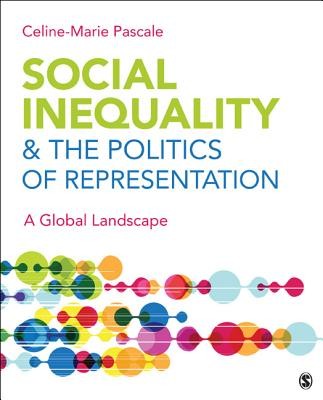
- We will send in 10–14 business days.
- Publisher: SAGE Publications, Inc
- ISBN-10: 1412992214
- ISBN-13: 9781412992213
- Format: 18.5 x 23.1 x 2 cm, minkšti viršeliai
- Language: English
- SAVE -10% with code: EXTRA
Social Inequality & The Politics of Representation (e-book) (used book) | bookbook.eu
Reviews
Description
In a global landscape, the representational practices through which inequalities gain meaning are central- both within and across national boundaries. Social Inequality & The Politics of Representation takes a fresh look at how inequalities of class, race, sexuality, gender, and nation are constructed in twenty countries on five continents. It offers both rich insight and cultural critique- yet it does not offer a universal paradigm, nor is it concerned with debates about scholarship from "the center" or "the periphery". The collection de-centers North American/European paradigms by placing scholarship from countries around the globe on equal footing. Readers will find a variety of analytical styles including frame analysis, semiotics, poststructural discourse analysis, critical discourse studies, and conversation analysis. Each chapter provides an overview of relevant cultural and historical contexts for an international audience as well as a brief introduction to relevant methodological and theoretical frameworks. Consequently, it is both a richly diverse and easily accessible collection.
EXTRA 10 % discount with code: EXTRA
The promotion ends in 22d.11:44:24
The discount code is valid when purchasing from 10 €. Discounts do not stack.
- Publisher: SAGE Publications, Inc
- ISBN-10: 1412992214
- ISBN-13: 9781412992213
- Format: 18.5 x 23.1 x 2 cm, minkšti viršeliai
- Language: English English
In a global landscape, the representational practices through which inequalities gain meaning are central- both within and across national boundaries. Social Inequality & The Politics of Representation takes a fresh look at how inequalities of class, race, sexuality, gender, and nation are constructed in twenty countries on five continents. It offers both rich insight and cultural critique- yet it does not offer a universal paradigm, nor is it concerned with debates about scholarship from "the center" or "the periphery". The collection de-centers North American/European paradigms by placing scholarship from countries around the globe on equal footing. Readers will find a variety of analytical styles including frame analysis, semiotics, poststructural discourse analysis, critical discourse studies, and conversation analysis. Each chapter provides an overview of relevant cultural and historical contexts for an international audience as well as a brief introduction to relevant methodological and theoretical frameworks. Consequently, it is both a richly diverse and easily accessible collection.


Reviews